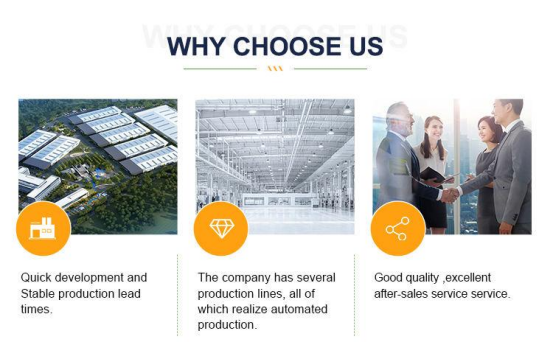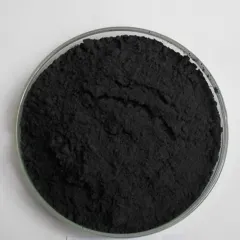Overview of lithium battery electrode material :
The lithium battery cathode material is the negative electrode in a lithium-ion battery, which is paired with the cathode material in a lithium-ion battery. The anode material in Li-ion batteries acts as a host, reversibly allowing Li-ion intercalation/deintercalation during charge/discharge cycles.
Lithium battery anode materials are roughly divided into six types: carbon anode materials, alloy anode materials, tin-based anode materials, lithium-containing transition metal nitride anode materials, nanoscale materials, and nanoscale anode materials.
Lithium battery electrode materials have high electronic conductivity, and carbon materials are insoluble in electrolyte
Application of lithium battery electrode materials:
Lithium battery anode materials are used to store and release battery energy and are also an important part of batteries. The graphite anode has better compatibility with the electrolyte, which is also an improvement in battery performance.
The lithium battery electrode material is the carrier of lithium ions and electrons during the charging process of the lithium ion battery, and plays the role of energy storage and energy release. In the battery cost, the anode material accounts for about 5%-15%, which is one of the important raw materials for lithium-ion batteries.
As one of the future anode materials, the silicon-carbon composite material has a theoretical gram capacity of about 4200mAh/g, which is more than 10 times higher than the 372mAh/g of the graphite anode. After industrialization, the battery capacity will be greatly improved.
Lithium battery electrode material:
We supply high-purity ultra-fine lithium battery anode materials, such as silicon powder, silicon c, silicon o, graphite, graphene, etc. Email us or click the desired product to send an inquiry.

Payment Term:
T/T, Credit Card, Western Union, Paypal etc.
Term for delivery:
By air, courier or by sea according to the needs of the customer.
Conditions of storage:
1.) Maintain a dry area at the temperature of room.
2.) Avoid high and damp temperatures.
3.) Utilize immediately following the opening of the bag inside.

FAQ:
Q1:
Which material is most commonly used?
Re:Carbon-based materials and metal oxide materials are commonly used in the electrode materials of lithium batteries.
Carbon-based materials are the most commonly used cathode materials for lithium batteries, mainly natural graphite, artificial graphite, hard graphite, and so on. They have the advantages of stable and reliable performance, good electrochemical stability, long life, and low price. However, carbon-based materials have a low specific capacity and cannot withstand high current discharges.
Metal oxide materials are the main way to prepare high-capacity and high-power batteries. Common metal oxides include ternary materials, manganese-based materials, cobalt-based materials, nickel-based materials, iron-based materials, etc. These materials have stable electrochemical properties and excellent electrochemical reaction kinetics properties at high voltages. However, metal oxide materials have some defects, such as poor stability and fast capacity decay.
Q2:
What are the advantages of lithium batteries?
Re:High energy density: Lithium batteries have a relatively high energy density and can provide considerable electrical energy for relatively lightweight devices, making them an ideal energy source for portable devices.
Lightweight: Lithium batteries are lightweight because their anode and cathode materials are lightweight.
Low self-discharge rate: The self-discharge rate of lithium batteries is relatively low, which means that they can retain their charge after storage for some time without frequent charging.
Fast charging: Most lithium batteries can be charged relatively quickly, providing a quick recharge of energy.
Low maintenance requirements: Lithium batteries generally do not require regular maintenance; liquid levels are not regularly checked or replenished because they are enclosed.
Wide adaptability: Lithium batteries are suitable for various applications, including mobile devices, electric vehicles, solar energy storage systems, emergency power supplies, etc.
Green and environmental protection: lithium batteries are non-toxic, pollution-free, a wide source of raw materials, and cheap.
Q3:
What's the difference between it and a lead-acid battery?
Re:Environmental protection: Lithium batteries are relatively environmentally friendly and have no pollution problem from heavy metal lead. The lead-acid battery has lead pollution, which has a certain impact on the environment.
Safety: Lead-acid battery technology is relatively mature, and its safety is usually higher than lithium batteries. Lithium batteries may show high activity in some cases, and there are safety risks such as deflagging.
Specific energy: Lithium batteries are usually higher than lead-acid batteries in terms of mass and volume energy, which means that the same volume or weight of lithium batteries can store more electrical energy.
Life: The cycle life of lithium batteries is relatively long, generally up to more than 1,000 times, and the cycle life of lead-acid batteries is usually about 300-500 times. In addition, the service life of lithium batteries is usually longer than lead-acid batteries, which can reach about 4-5 years. In comparison, the service life of lead-acid batteries is about two years.
Self-discharge rate: The monthly self-discharge rate of lithium batteries is low, usually less than 3%, while the self-discharge rate of lead-acid batteries is higher, generally between 15-30%.
Discharge characteristics: under the same capacity, lithium batteries can release more electricity when discharging at a high current, about 30% higher than lead-acid batteries.
Q4:
Which material is better?
Re:Lithium iron phosphate (LFP) has the advantages of good safety, low cost, and long life, so it has been widely used in electric buses and other fields. However, its energy density could be higher, which is unsuitable for applications such as passenger cars requiring high energy density.
Terpolymer (NCM/NCA) has high energy density and good low-temperature performance, so it has been widely used in passenger cars and other fields. However, its cost is relatively high, and the safety performance needs to be guaranteed.
Lithium manganate (LMO) is mainly used in two-wheeled electric vehicles. However, it also has a relatively low energy density.
Q5:
Which is better for electric bikes?
Re:Lithium manganate (LMO) and lithium iron phosphate (LFP) are two common cathode materials for lithium batteries, and they have certain applications in electric bicycles. Lithium manganate has higher voltage and lower cost and can provide higher energy density and better endurance, but its cycle life is relatively short, and the safety is slightly worse. Lithium iron phosphate has better safety and longer life, but its energy density is relatively low, requiring more battery packs to achieve the same range.
Considering the above factors, lithium iron phosphate may be a more suitable electrode material for electric bicycles. First of all, it has a high safety and can reduce the risk of battery fire or explosion. Secondly, it has a longer life, which can reduce the frequency and cost of replacing batteries.

